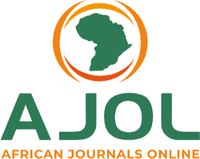A STUDY ON MALARIA PARASITE DENSITY AND HAEMOGLOBIN CONCENTRATION AMONG PREGNANT WOMEN ATTENDING ANTENATAL CLINIC IN GOMBE LOCAL GOVERNMENT AREA, GOMBE STATE, NIGERIA
DOI:
https://doi.org/10.56892/bima.v2i02.96Keywords:
Malaria Parasitaemia, Anaemia, Haemoglobin Concentration, Pregnant Women, Gravity, Trimester, Ages.Abstract
Malaria in pregnancy is a major contributor to adverse maternal and prenatal outcome. In
hyper-endemic areas like Nigeria, it is a common cause of anaemia in pregnancy in both
immune and non-immune individuals and aggravated by poor socioeconomic circumstances.
The main objective of this study is to correlate malaria parasitaemia and anaemia in relation
to age group, gravidity and trimesters among pregnant women attending antenatal clinic in
some selected health facilities in Gombe Local Government Area, Gombe State, Nigeria. 400
pregnant women, aged between 15-45 years voluntarily participated and recruited for the
study. The study was conducted in rainy season from the months of June to September, 2015,
when malaria infection is usually high. Their blood samples were collected and examined for
both malaria parasites and haemoglobin concentration. Demographic data was collected using
data collection form. All the data collected were analyzed using SPSS version 16.0 and Chisquare.
The results showed prevalence of 91% and 79.5% in malaria and anaemia
respectively among the study subjects. The pregnant women register late (usually during
second and third trimester) for antenatal care in Gombe Local government‘s Health Facilities.
It is suggested that effort should be intensified to make our pregnant women register early for
antenatal care in order to identify the complications associated with malaria and anemia in
pregnancy. Intermittent preventive treatment for malaria should be incorporated into routine
drugs for antenatal women.





